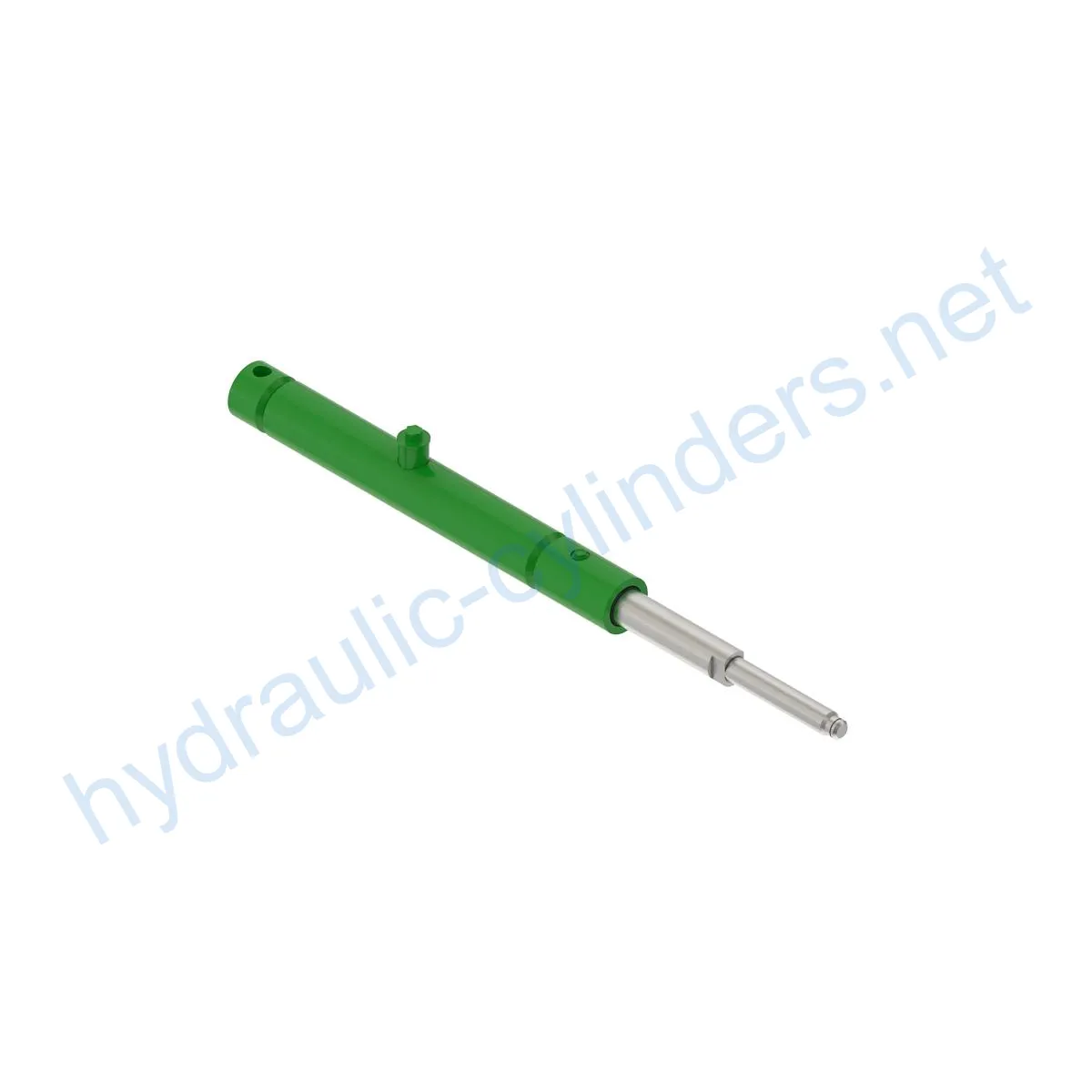Replacement Of AXE25003 Hydraulic Cylinder
Як один з виробників, постачальників та експортерів механічних виробів, ми пропонуємо гідравлічні циліндри та багато інших продуктів.
Будь ласка, зв'яжіться з нами для уточнення деталей.
Пошта:sales@hydraulic-cylinders.net
Виробник, постачальник, експортер гідравлічних циліндрів.
Replacement Of AXE25003 Hydraulic Cylinder
The Replacement Of AXE25003 Hydraulic Cylinder is a crucial component for various machinery models, including 616, 616R, 618, 620, 622, 625F, 630, 635, and 635F. This hydraulic cylinder is designed to provide reliable and efficient performance in a wide range of applications.
Specifications:
- Weight: 10.66 lb
- Height: 3.7 in
- Length: 26.4 in
Product Definition and Function
The Replacement Of AXE25003 Hydraulic Cylinder is a crucial part of hydraulic systems. It plays a vital role in converting hydraulic energy into mechanical force, allowing machinery to perform various tasks efficiently. This cylinder is responsible for powering different hydraulic mechanisms, such as lifting, pushing, and pulling.
Product Features
1. Improved Equipment Performance
Replacing damaged or worn hydraulic cylinders can restore the normal operational capability of equipment, ensuring optimal performance in various applications.
2. Enhanced Safety
Regularly replacing hydraulic cylinders can reduce safety risks associated with cylinder failures, ensuring the safety of operators and equipment.
3. Overload Protection
New cylinder designs often incorporate better overload protection mechanisms, enhancing overall safety during operations.
4. Quick Installation
Modern hydraulic cylinders are designed for easy installation and replacement, minimizing downtime and allowing for efficient equipment maintenance.
5. Standardized Components
Many hydraulic cylinders are standardized products, facilitating the acquisition of replacement parts in the market.
Applications of Replacement Of AXE25003 Hydraulic Cylinder
The Replacement Of AXE25003 Hydraulic Cylinder finds its applications in various scenarios:
1. Excavators
In excavators, hydraulic cylinders in the boom or bucket may get damaged or worn due to prolonged use or overload, requiring replacement to restore normal operations.
2. Cranes
The hydraulic cylinders in crane jibs are prone to wear and tear due to frequent lifting and lowering, necessitating regular replacement to ensure safety.
3. Tractors
The front-end loader hydraulic cylinders in tractors may experience leaks or performance degradation during continuous lifting and tilting operations, requiring replacement.
4. Harvesters
During harvesting, hydraulic systems endure high pressure, and cylinders may get damaged due to fatigue. Timely replacement is essential to maintain operational efficiency.
5. Automated Production Lines
Hydraulic cylinders are used to control robotic arms and other automated machinery. Immediate replacement is necessary to ensure uninterrupted production in case of cylinder failure.
Maintenance Tasks
1. Regular Inspections
Periodic inspections of the hydraulic cylinder are essential to identify any signs of damage or wear. This helps in detecting potential problems before they escalate.
2. Proper Lubrication
Appropriate lubrication is crucial for smooth cylinder operation. Regularly lubricating the cylinder ensures optimal performance and extends its lifespan.
3. Seal Replacement and Calibration Checks
Replacing worn-out seals and conducting calibration checks are important maintenance tasks to prevent leaks and ensure accurate cylinder performance.
Safety Considerations and Environmental Factors
When using hydraulic cylinders, it is important to prioritize safety measures. Proper training, adherence to safety guidelines, and the use of appropriate personal protective equipment (PPE) are crucial to prevent accidents and ensure the well-being of personnel.
Fault Diagnosis and Common Problems
Some common issues related to hydraulic cylinders include:
1. Leaks
Leaking hydraulic fluid can indicate seal damage or other cylinder issues. Prompt diagnosis and seal replacement can resolve the problem.
2. Loss of Power
If the hydraulic cylinder loses power, it may be due to internal damage or malfunctioning components. Thorough inspection and appropriate repairs or replacements can restore performance.
3. Irregular Movements
When the hydraulic cylinder exhibits irregular movements, such as sticking or jerking, it may be caused by internal wear or misalignment. Identifying and addressing the root cause can rectify the issue.
Troubleshooting and Prevention
To effectively diagnose and resolve hydraulic cylinder problems, consider the following tips:
1. Troubleshooting Tips
– Inspect all connections and fittings for leaks
– Check for any signs of damage or wear on the cylinder
– Verify proper hydraulic fluid levels and quality
– Ensure all valves and controls are functioning correctly
– Consult the equipment’s manual for specific troubleshooting steps
2. Preventive Measures
– Follow recommended maintenance schedules
– Regularly inspect the hydraulic system for any signs of wear or damage
– Use high-quality hydraulic fluids and lubricants
– Train operators on proper equipment usage and safety precautions
– Keep the working environment clean and free from debris that could harm the hydraulic system

Design Considerations and Selection Criteria
When designing and selecting hydraulic cylinders, various factors should be taken into account:
1. Load-Bearing Capacity
The hydraulic cylinder should be capable of handling the expected loads without compromising its structural integrity or performance.
2. Sealing and Durability
Choosing high-quality seals and durable materials ensures long-lasting performance and prevents leaks.
3. Safety
Designing cylinders with safety features, such as overload protection mechanisms and fail-safe systems, enhances the overall safety of hydraulic operations.
4. Maintenance and Repair
The design should allow for easy maintenance, repair, and replacement of components, reducing downtime and overall costs.
Sealing and Lubrication of Hydraulic Cylinder
Proper sealing and lubrication are vital for the performance and longevity of hydraulic cylinders:
– Various sealing elements, including piston seals and rod seals, should be made of wear-resistant materials like polyurethane or nitrile rubber.
– The cylinder body and threaded ends should undergo precise surface finishing to enhance wear resistance.
– Regularly adding an appropriate amount of hydraulic oil ensures proper lubrication and minimizes friction within the cylinder.
Regular Inspection and Preventive Maintenance Measures
Regular inspections and preventive maintenance activities are crucial for maintaining hydraulic cylinder performance:
1. Proper Installation and Alignment
During installation, ensure proper alignment of the cylinder and provide guidance to align it correctly. Using suitable mounting brackets to secure the cylinder is recommended.
2. Recommended Inspection, Repair, and Replacement Procedures
Follow recommended inspection
Take a Tour of Our VR Factory:
Take a tour of our VR factory with the following
Hydraulic Cylinder Application:


